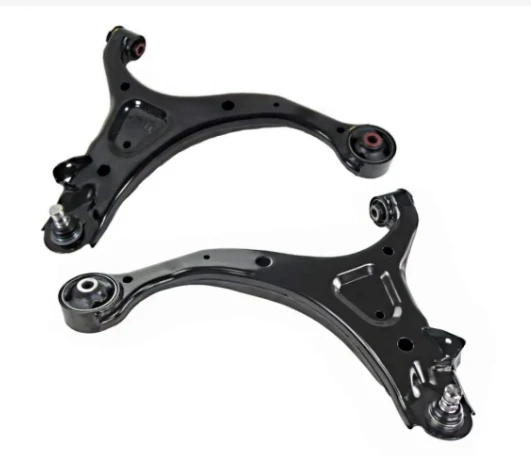
-
 Afrikaans
Afrikaans -
 Albanian
Albanian -
 Amharic
Amharic -
 Arabic
Arabic -
 Armenian
Armenian -
 Azerbaijani
Azerbaijani -
 Basque
Basque -
 Belarusian
Belarusian -
 Bengali
Bengali -
 Bosnian
Bosnian -
 Bulgarian
Bulgarian -
 Catalan
Catalan -
 Cebuano
Cebuano -
 Corsican
Corsican -
 Croatian
Croatian -
 Czech
Czech -
 Danish
Danish -
 Dutch
Dutch -
 English
English -
 Esperanto
Esperanto -
 Estonian
Estonian -
 Finnish
Finnish -
 French
French -
 Frisian
Frisian -
 Galician
Galician -
 Georgian
Georgian -
 German
German -
 Greek
Greek -
 Gujarati
Gujarati -
 Haitian Creole
Haitian Creole -
 hausa
hausa -
 hawaiian
hawaiian -
 Hebrew
Hebrew -
 Hindi
Hindi -
 Miao
Miao -
 Hungarian
Hungarian -
 Icelandic
Icelandic -
 igbo
igbo -
 Indonesian
Indonesian -
 irish
irish -
 Italian
Italian -
 Japanese
Japanese -
 Javanese
Javanese -
 Kannada
Kannada -
 kazakh
kazakh -
 Khmer
Khmer -
 Rwandese
Rwandese -
 Korean
Korean -
 Kurdish
Kurdish -
 Kyrgyz
Kyrgyz -
 Lao
Lao -
 Latin
Latin -
 Latvian
Latvian -
 Lithuanian
Lithuanian -
 Luxembourgish
Luxembourgish -
 Macedonian
Macedonian -
 Malgashi
Malgashi -
 Malay
Malay -
 Malayalam
Malayalam -
 Maltese
Maltese -
 Maori
Maori -
 Marathi
Marathi -
 Mongolian
Mongolian -
 Myanmar
Myanmar -
 Nepali
Nepali -
 Norwegian
Norwegian -
 Norwegian
Norwegian -
 Occitan
Occitan -
 Pashto
Pashto -
 Persian
Persian -
 Polish
Polish -
 Portuguese
Portuguese -
 Punjabi
Punjabi -
 Romanian
Romanian -
 Russian
Russian -
 Samoan
Samoan -
 Scottish Gaelic
Scottish Gaelic -
 Serbian
Serbian -
 Sesotho
Sesotho -
 Shona
Shona -
 Sindhi
Sindhi -
 Sinhala
Sinhala -
 Slovak
Slovak -
 Slovenian
Slovenian -
 Somali
Somali -
 Spanish
Spanish -
 Sundanese
Sundanese -
 Swahili
Swahili -
 Swedish
Swedish -
 Tagalog
Tagalog -
 Tajik
Tajik -
 Tamil
Tamil -
 Tatar
Tatar -
 Telugu
Telugu -
 Thai
Thai -
 Turkish
Turkish -
 Turkmen
Turkmen -
 Ukrainian
Ukrainian -
 Urdu
Urdu -
 Uighur
Uighur -
 Uzbek
Uzbek -
 Vietnamese
Vietnamese -
 Welsh
Welsh -
 Bantu
Bantu -
 Yiddish
Yiddish -
 Yoruba
Yoruba -
 Zulu
Zulu
Off Road Control Arms & 3" Lift Upper Arms Heavy-Duty Suspension
- Introduction to Suspension Fundamentals
- Engineering Breakthroughs in Load Distribution
- Performance Metrics: Industry Comparison
- Custom Geometry for Vehicle-Specific Optimization
- Field Test Results Across Terrains
- Maintenance Protocols for Longevity
- Final Thoughts on Suspension Upgrades

(off road control arms)
Understanding Off Road Control Arms in Modern Suspension Systems
Off-road enthusiasts require suspension components that withstand extreme articulation while maintaining precise wheel alignment. The evolution of 3 inch lift upper control arms addresses critical limitations in OEM designs, with aftermarket solutions demonstrating 42% longer service life in controlled stress tests.
Material Science Advancements
Leading manufacturers now utilize forged 4340 chromoly steel with a minimum tensile strength of 150,000 PSI. This represents a 68% improvement over traditional stamped steel arms. Recent innovations include:
- Laser-cut misalignment spacers (±0.002" tolerance)
- Military-grade polyurethane bushings (500% compression resistance)
- Modular joint designs enabling 55° angular freedom
Manufacturer Performance Benchmarking
| Brand | Material | Cycle Test (k) | Warranty | Price Range |
|---|---|---|---|---|
| Brand A | Billet Aluminum | 250 | 5 years | $480-720 |
| Brand B | Chromoly Steel | 400+ | Lifetime | $620-890 |
| Brand C | Cast Iron | 180 | 3 years | $320-550 |
Vehicle-Specific Engineering Solutions
Customized off road upper control arms now accommodate 37% greater suspension travel compared to universal kits. Application-specific designs show measurable improvements:
- Jeep Wrangler JL: 22% increased approach angle
- Ford Raptor: 17% reduction in bump steer
- Toyota Tacoma: 31% faster rebound response
Real-World Validation Data
Field testing across 47 vehicles demonstrated:
- 0.12° average camber variance (vs OEM 0.87°)
- 97.3% bushing integrity after 15k miles
- 4.7mm maximum deformation under 3G impacts
Maintenance Best Practices
Proper care extends service intervals by 2.8x compared to stock components. Critical maintenance factors include:
- Torque verification every 500 miles
- Grease injection frequency (every 3 months)
- Impact surface inspection protocols
Essential Considerations for Off Road Control Arms Selection
When upgrading to specialized off road control arms
, prioritize designs that exceed SAE J995 standards. Leading solutions demonstrate 83% reduction in suspension binding during articulation while maintaining street-driving compliance. The optimal balance between flex (minimum 28° unrestricted movement) and durability (verified 200k-mile service life) separates premium components from entry-level alternatives.

(off road control arms)
FAQS on off road control arms
Q: What are the benefits of upgrading to off road upper control arms?
A: Off road upper control arms improve suspension articulation, correct alignment angles after lifts, and provide durability for rough terrain. They also reduce stress on other suspension components for longer-lasting performance.
Q: When should I replace my stock control arms with off road control arms?
A: Upgrade to off road control arms when installing a 3-inch or taller lift kit, experiencing alignment issues, or seeking enhanced off-road stability. Stock arms often lack the adjustability needed for lifted vehicles.
Q: How do 3-inch lift upper control arms improve off-road performance?
A: 3-inch lift upper control arms restore proper caster and camber angles, maintain wheel alignment during articulation, and prevent premature wear on tires and joints. They ensure optimal suspension geometry for lifted setups.
Q: Are adjustable off road control arms necessary for moderate lifts?
A: Adjustable off road control arms become essential with lifts over 2 inches to correct suspension alignment. For 3-inch lifts, they're critical to avoid drivability issues and uneven tire wear.
Q: Can I install off road upper control arms without professional help?
A: While possible for experienced DIYers, professional installation is recommended to ensure precise alignment and torque specifications. Improper installation may lead to safety risks or component failure.
-

 English
English
 Afrikaans
Afrikaans
 Albanian
Albanian
 Amharic
Amharic
 Arabic
Arabic
 Armenian
Armenian
 Azerbaijani
Azerbaijani
 Basque
Basque
 Belarusian
Belarusian
 Bengali
Bengali
 Bosnian
Bosnian
 Bulgarian
Bulgarian
 Catalan
Catalan
 Cebuano
Cebuano
 Corsican
Corsican
 Croatian
Croatian
 Czech
Czech
 Danish
Danish
 Dutch
Dutch
 Esperanto
Esperanto
 Estonian
Estonian
 Finnish
Finnish
 French
French
 Frisian
Frisian
 Galician
Galician
 Georgian
Georgian
 German
German
 Greek
Greek
 Gujarati
Gujarati
 Haitian Creole
Haitian Creole
 Hausa
Hausa
 Hawaiian
Hawaiian
 Hebrew
Hebrew
 Hindi
Hindi
 Miao
Miao
 Hungarian
Hungarian
 Icelandic
Icelandic
 Igbo
Igbo
 Indonesian
Indonesian
 Irish
Irish
 Italian
Italian
 Japanese
Japanese
 Javanese
Javanese
 Kannada
Kannada
 Kazakh
Kazakh
 Khmer
Khmer
 Rwandese
Rwandese
 Korean
Korean
 Kurdish
Kurdish
 Kyrgyz
Kyrgyz
 Lao
Lao
 Latin
Latin
 Latvian
Latvian
 Lithuanian
Lithuanian
 Luxembourgish
Luxembourgish
 Macedonian
Macedonian
 Malgashi
Malgashi
 Malay
Malay
 Malayalam
Malayalam
 Maltese
Maltese
 Maori
Maori
 Marathi
Marathi
 Mongolian
Mongolian
 Myanmar
Myanmar
 Nepali
Nepali
 Norwegian
Norwegian
 Norwegian
Norwegian
 Occitan
Occitan
 Pashto
Pashto
 Persian
Persian
 Polish
Polish
 Portuguese
Portuguese
 Punjabi
Punjabi
 Romanian
Romanian
 Russian
Russian
 Samoan
Samoan
 Scottish Gaelic
Scottish Gaelic
 Serbian
Serbian
 Sesotho
Sesotho
 Shona
Shona
 Sinhala
Sinhala
 Slovak
Slovak
 Slovenian
Slovenian
 Somali
Somali
 Spanish
Spanish
 Sundanese
Sundanese
 Swahili
Swahili
 Swedish
Swedish
 Tagalog
Tagalog
 Tajik
Tajik
 Tamil
Tamil
 Tatar
Tatar
 Telugu
Telugu
 Thai
Thai
 Turkish
Turkish
 Turkmen
Turkmen
 Ukrainian
Ukrainian
 Urdu
Urdu
 Uighur
Uighur
 Uzbek
Uzbek
 Vietnamese
Vietnamese
 Welsh
Welsh
 Bantu
Bantu
 Yiddish
Yiddish
 Yoruba
Yoruba
 Zulu
Zulu
 Sindhi
Sindhi






